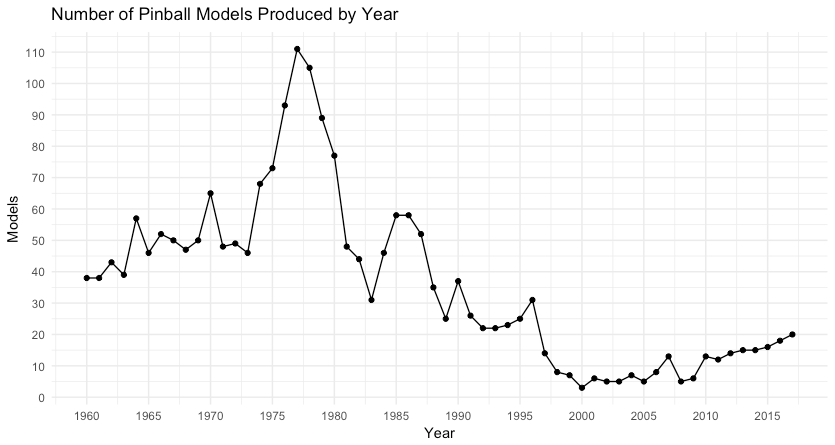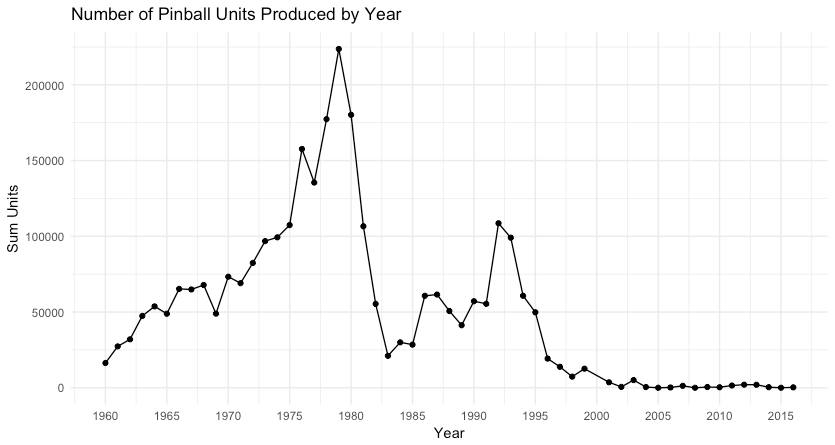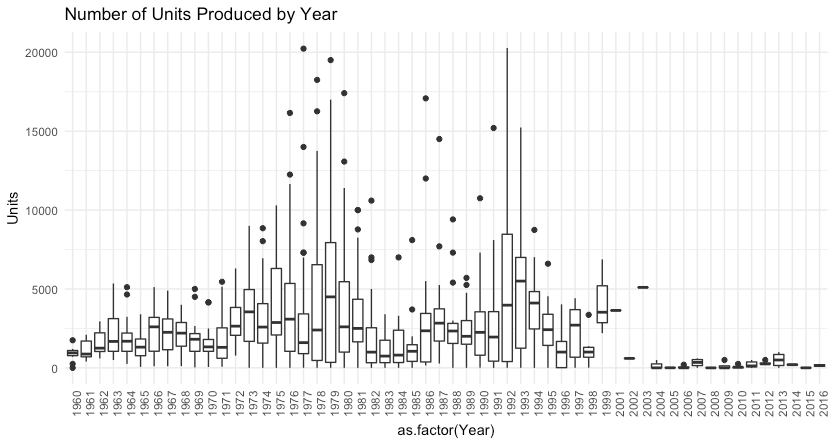It’s not uncommon to hear people say that pinball is currently experiencing a resurgence. However, how big is this resurgence and how does stack up next to the previous glory days of pinball? I decided to try and answer these questions by making a data visualization of the plot using data from the internet pinball database. The plot below shows the number of unique titles produced, from 1960 to today.
The end result is striking. First, it’s just incredible how massive the pinball industry was in the late 70’s. At the peak of production, the industry was cranking out over 100 unique titles in a single year! I can’t even begin to imagine how exciting this would have been to experience. Shortly after this peak came the video game craze, which resulted in a dramatic decrease in production. This decrease would steadily continue until 2000, when pinball almost nearly died. Of course, there were detours along the way. In the mid 80’s, production briefly increased for several years before to downward trend continued again. During the 90’s production leveled out briefly again, before finally plunging to near 0.
This brings us to the current state of affairs. As 2017 comes to a close, there have been 20 unique titles have been released. Relative to the early 2000’s this is indeed a meaningful uptick. Current production, in terms of models released, are approaching those of the mid 1990’s.
While this is good reason to be excited, it is worth pointing out a few caveats. First, it is hard to directly compare modern pinball production numbers with those of previous generations. Modern pinball manufacturers have adopted a tiered production approach (e.g. pro, premium, LE) which was not used in previous generations. While these are considered distinct models, they are only slight variations on other models, which lowers overall production costs. One could reasonably argue that the modern numbers are artificially inflated. Second, the modern numbers also include re-releases of old titles (e.g., Attack from Mars), which do not impose the same development costs as entirely new titles. Finally, this analysis only includes the number of models released, not the number of units produced. Unfortunately, those data are not readily accessible in the IPDB without massive amounts of manual labor. If anyone has access to that data, please let me know!
In sum, while pinball is currently experiencing a resurgence, I think it’s fair to say that this resurgence is modest in size at best. We are a long way from the glory days of pinball. That said, any upward movement is good. Let’s hope that the trend continues through 2018 and beyond!


